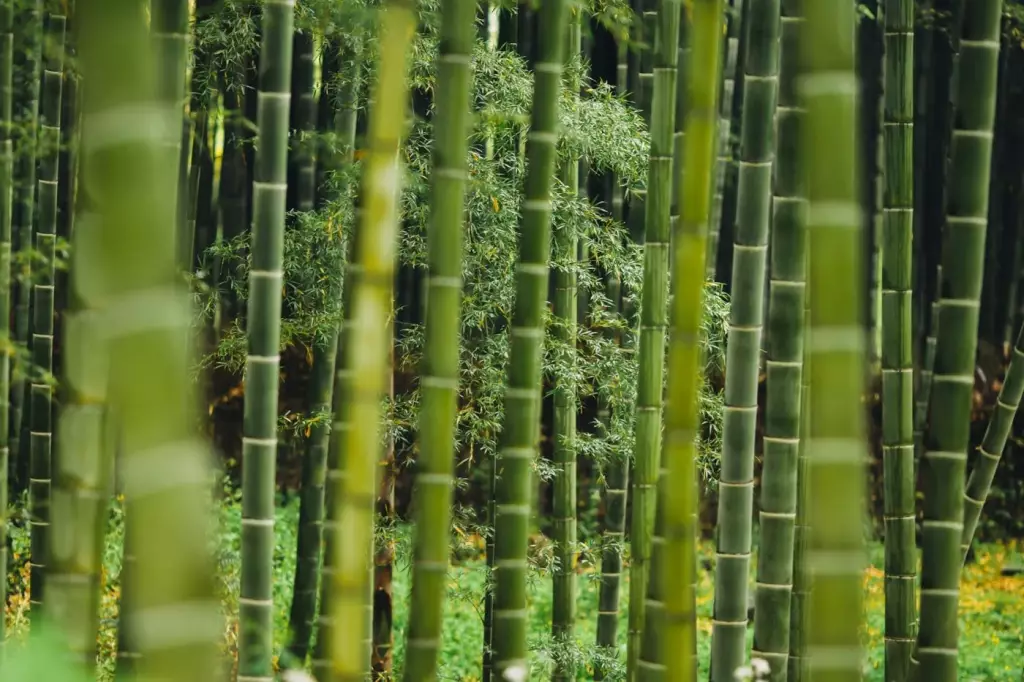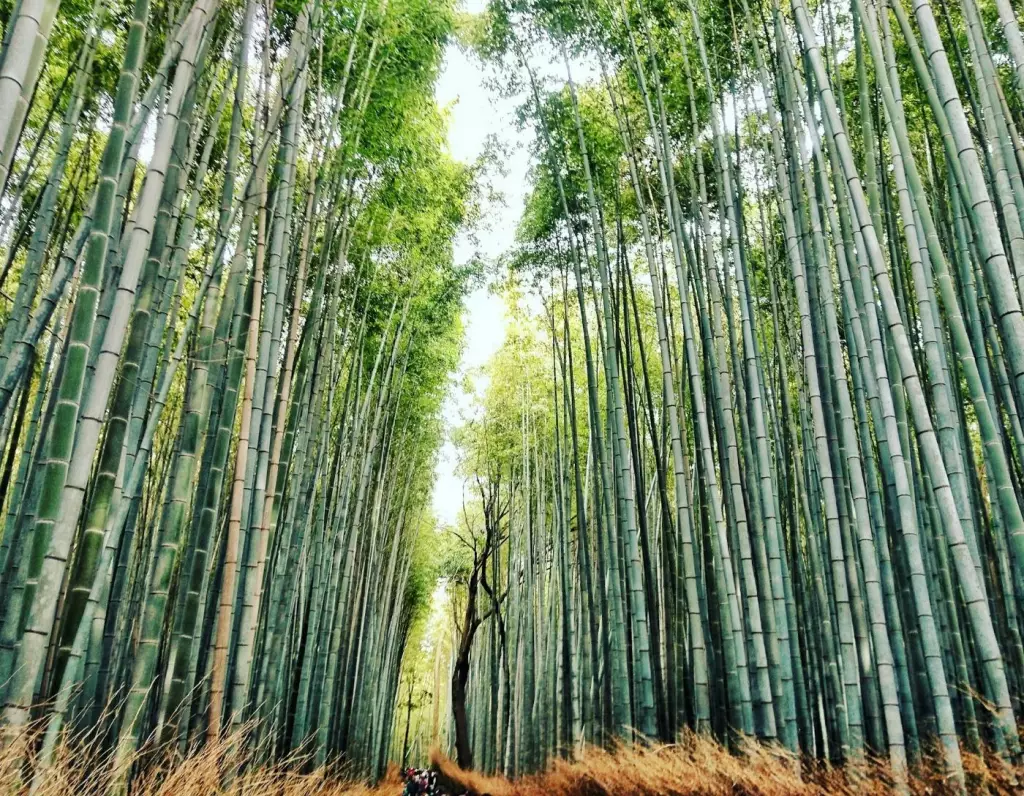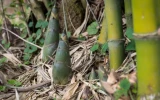Average Bamboo Biomass Yield Per Acre (What to Expect)
Bamboo stands out as a highly renewable resource, with an impressive ability to grow up to 35 inches within a single day under optimal conditions. When considering the average bamboo biomass yield per acre, you need to recognize the variability influenced by species, climate, and cultivation practices. Let's dive into the intricacies of bamboo cultivation, focusing on its biomass yield per acre.
The average bamboo biomass yield per acre typically ranges from 15 to 25 tons per acre annually, depending on species, climate, and management practices. This high yield makes bamboo a highly renewable and sustainable resource for various applications, including bioenergy, construction, and paper production.
While you might expect a lush green bounty, the secret to maximizing your bamboo's growth lies in understanding and nurturing its unique needs. Let's take a look at the various bamboo farming practices you can do to enhance biomass yield.
Summary
- The biomass yield of bamboo species varies significantly, ranging from 8 tons per acre per year for Common Bamboo to 25 tons per acre per year for Guadua Bamboo.
- High-yielding species like Guadua Bamboo are particularly valuable for bioenergy and carbon sequestration projects due to their substantial biomass production.
- Bamboo is noted for its rapid growth and quick maturation, with species like Moso Bamboo capable of growing up to 28 inches in 24 hours under optimal conditions and reaching maturity in about 4 to 5 years.

On this page:
Bamboo Varieties and Their Average Yield per Acre
Different bamboo species are suited to varying climates and soil types, demonstrating distinct growth patterns and biomass potentials.
| Bamboo Species | Common Name | Estimated Average Biomass Yield (per acre per year) |
|---|---|---|
| Phyllostachys edulis | Moso Bamboo | 15-20 tons |
| Bambusa bambos | Giant Thorny Bamboo | 10-15 tons |
| Dendrocalamus strictus | Iron Bamboo | 10-12 tons |
| Guadua angustifolia | Guadua Bamboo | 20-25 tons |
| Bambusa vulgaris | Common Bamboo | 8-10 tons |
| Bambusa tulda | Indian Timber Bamboo | 10-15 tons |
| Bambusa arundinacea | Thorny Bamboo | 12-18 tons |
Moso bamboo is a highly valuable species
-
Growth pattern: Moso bamboo is one of the fastest-growing plants, capable of reaching up to 28 inches in 24 hours under optimal conditions. It usually matures in about 4 to 5 years, which is relatively quick for bamboo. It has an average yearly growth of 2-4 feet.
-
Biomass potential: High biomass yield is due to its rapid growth rate and large size, making it an excellent source for bioenergy and construction materials. The high yield range of 15-20 tons per acre per year reflects its efficiency in carbon sequestration and its economic value in bamboo farming.

The Giant thorny bamboo is known for its impressive size and durability
- Growth pattern: Known for its dense clumps and thick culms, it can reach full height in 3 to 4 years.
- Biomass potential: Its robust growth habit contributes to a respectable biomass yield, making it suitable for paper production, handicrafts, and construction purposes.
The Iron bamboo is highly preferred for heavy-duty applications
Growth pattern: Characterized by its strong and stiff culms, it grows relatively slower compared to some other species but produces very durable material.
Biomass potential: The yield is slightly lower, reflecting its slower growth rate. However, its biomass is highly valued for its strength and durability, ideal for construction and making musical instruments.
Guadua bamboo is often referred to as "vegetable steel"
-
Growth pattern: This species is noted for its large diameter culms and rapid growth, capable of reaching maturity in 5 to 6 years.
-
Biomass potential: It has one of the highest biomass yields among bamboo species, making it extremely valuable for structural applications, bioenergy, and carbon sequestration projects.
The Common bamboo is used extensively for ornamental purposes
Growth pattern: Exhibits fast growth and can reach maturity in about 3 years, producing a moderate amount of biomass.
Biomass potential: Its yield is on the lower end, but its ease of cultivation and versatility make it popular for ornamental use, crafts, and light construction.
The Indian timber bamboo is particularly suited for paper and pulp production
Growth pattern: Has a moderate growth rate and culm diameter, reaching maturity in 3 to 4 years.
Biomass potential: Offers a good balance of yield, making it suitable for paper production, scaffolding, and other construction purposes.
Thorny bamboo is used in the construction of durable structures
- Growth pattern: Characterized by its thorny nature and large, thick-walled culms, it grows relatively quickly.
- Biomass potential: The higher end of its yield range reflects its dense growth and the substantial biomass produced, useful in construction and as a raw material for various industries.

Factors Affecting Bamboo Biomass Production
In your journey to optimize bamboo biomass yield per acre, you need to understand the variety of factors that can influence production.
The role of climate and soil quality
You'll find that temperature and moisture content are pivotal to your bamboo's health—extremes can hinder growth. Specifically, bamboo thrives in warmer climates with adequate rainfall, as these conditions maximize growth and biomass accumulation, leading to higher yields.
| Temperature (°C) | Moisture Content (%) |
|---|---|
| 20-35 | 30-50 |
Your bamboo plantation depends heavily on soil quality, with pH levels ideally between 5 and 7 for robust growth. Poor soil conditions can notably reduce yields.
| Ideal pH Level |
|---|
| 5.0 - 7.0 |
Cultural practices can contribute to biomass yield
- Farming practices: To enhance yield, your farming practices should include periodic thinning to maintain optimal density, allowing each plant access to sufficient nutrients and sunlight.
| Practice | Benefit |
|---|---|
| Thinning | Increased sunlight penetration |
| Regular harvesting | Promotes growth |
- Age and processing: It's noteworthy that the age of the bamboo and the processing methods employed can significantly influence not only the amount but also the quality of the biomass produced.
Management techniques: Diligent management can boost your bamboo's productivity. This includes strategies like proper irrigation, fertilization, and pest management, all essential for a profitable bamboo biomass yield. Check out the how often to fertilize bamboo according to this article.
Farming Practices to Enhance Bamboo Biomass Yield
Caring for your bamboo crop starts with understanding that the culm is essentially the stem of the bamboo. Keeping them healthy is critical for maximizing biomass production, which is important if you're looking at bamboo for bioenergy or as a sustainable development resource.

Proper site selection
You want to start on the right foot by choosing an appropriate site. Look for areas with good drainage and fertile soil to encourage robust growth.
Regular culm cutting
To stimulate growth, regular cutting of the culm is essential. This not only helps increase the height of your bamboo but also encourages the growth of new shoots, leading to greater biomass yield.
Spacing and density
The number of plants per acre significantly impacts yield. Use these specific spacing guidelines:
- Low density: 200 plants per acre for timber types
- High density: 400-600 plants per acre for biomass varieties
Nutrient management
A balanced diet will do wonders for your bamboos, providing them with the strength to grow tall and sturdy. Use a mix of organic manures and chemical fertilizers to meet their nutritional requirements.
| Nutrient | Estimated Range (kg/acre) |
|---|---|
| Nitrogen | 120-150 |
| Potassium | 100-125 |
| Phosphorus | 80-100 |
Pest and disease control
Keep an eye out for signs of disease or pest infestation. Swift action can protect your crop and ensure the sustainable development of your bamboo biomass.
Remember, in countries like India, bamboo is not just a plant, it's a part of the culture—a crucial raw material for many industries. By adopting these farming practices, you're increasing your yield and contributing to a greener future.
Estimating the Profitability of Bamboo Yield per Acre
Biomass yield for Moso bamboo
- Species: Phyllostachys edulis (Moso bamboo)
- Yield: Moso bamboo forests can produce about 15 to 20 tons of biomass per acre per year once fully mature (around 5 to 6 years after planting).
Initial setup and maintenance costs
- Planting costs: Initial planting costs can range from $1,000 to $5,000 per acre, depending on the cost of saplings and labor.
- Maintenance costs: Annual maintenance costs, including fertilization, irrigation, and pest control, may range from $200 to $500 per acre.
Revenue sources
-
Bamboo shoots: In addition to biomass, Moso bamboo shoots are edible and can be a significant source of income. Prices for bamboo shoots can vary, but let's estimate $2 per pound.
-
Bamboo poles: Mature bamboo can be harvested for poles used in construction, furniture, and crafts. Prices for bamboo poles can vary widely based on quality and size but let's estimate an average of $5 per pole.
Estimated profit calculation
Assuming a mature bamboo forest, let's calculate the profit based on biomass yield and additional revenue sources. For simplicity, we'll not account for the time value of money or price fluctuations over time.
Annual biomass yield: 20 tons per acre (equivalent to 40,000 lbs, assuming 2,000 lbs per ton).
- If sold for biomass (e.g., for bioenergy or pulp) at $0.05 per pound, the revenue would be $2,000 per acre per year from biomass alone.
Bamboo shoots: If 10% of the biomass is harvestable shoots (4,000 lbs), and sells at $2 per pound, the revenue from shoots would be $8,000 per acre per year.
Bamboo poles: If 500 poles can be harvested per acre per year and sold at $5 per pole, the revenue from poles would be $2,500 per acre per year.
Total estimated revenue and profit
- Total revenue: $2,000 (biomass) + $8,000 (shoots) + $2,500 (poles) = $12,500 per acre per year.
- Less maintenance costs: Assuming $500 per acre per year.
- Net profit: $12,000 per acre per year (before considering initial planting costs).
Which Bamboo Is Best for Biomass Production?
When selecting the best bamboo species for biomass production, you'll want to consider several key traits that influence yield. These traits include growth rate, climate suitability, and the carbon sequestration potential of the bamboo.
Fast-growing bamboo species
A fast growth rate is critical for high biomass yield.
Species such as Phyllostachys can be particularly prolific. In optimal conditions, some species have been known to grow up to 3 feet within a year.
Bamboo species that are suitable for different climates
The climate adaptability of the bamboo species determines where it can effectively be cultivated. Some species, like Dendrocalamus asper, thrive in tropical climates, while others, such as Phyllostachys edulis (Moso bamboo), can tolerate a range of climates including temperate zones.
Species with the best carbon sequestration capability

Bamboo's capacity to absorb carbon varies by species, but on average, a hectare can absorb about 17 tonnes of carbon per year, making it a carbon sink and contributing positively to environmental sustainability.
Beema Bamboo Biomass per Acre
| Growth Stage | Estimated Yield (tons/acre) |
|---|---|
| Initial years | Up to 35 |
| After maturity | 40-50 |
Initial growth period
During the initial years after plantation, your Beema bamboo can produce up to 35 tons per acre. This remarkable growth rate is due to the species' fast-growing nature and high biomass accumulation.
Maturity and maximum yield
As your Beema bamboo reaches maturity, you can expect an increase in yield. Mature Beema bamboo stands produce between 40-50 tons per acre annually. This sustainable yield makes Beema bamboo a valuable resource for biomass energy production.
Yield variability
Note that bamboo yield isn't uniform and can vary significantly based on several factors, including species, environmental conditions, and management practices.
The Guadua bamboo, for instance, can yield up to 40 tons per acre while Black Bamboo might only yield 10 tons per acre.



